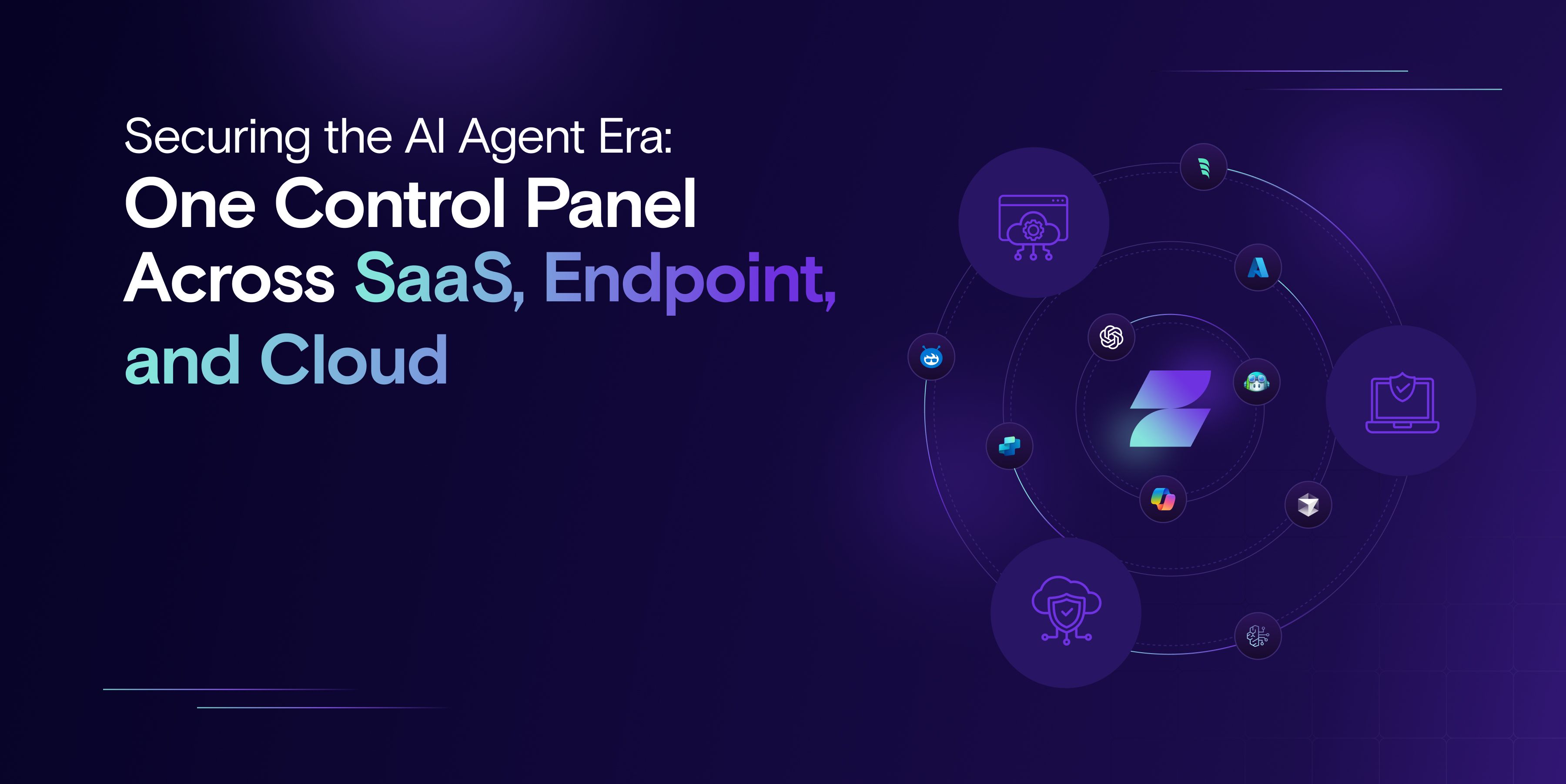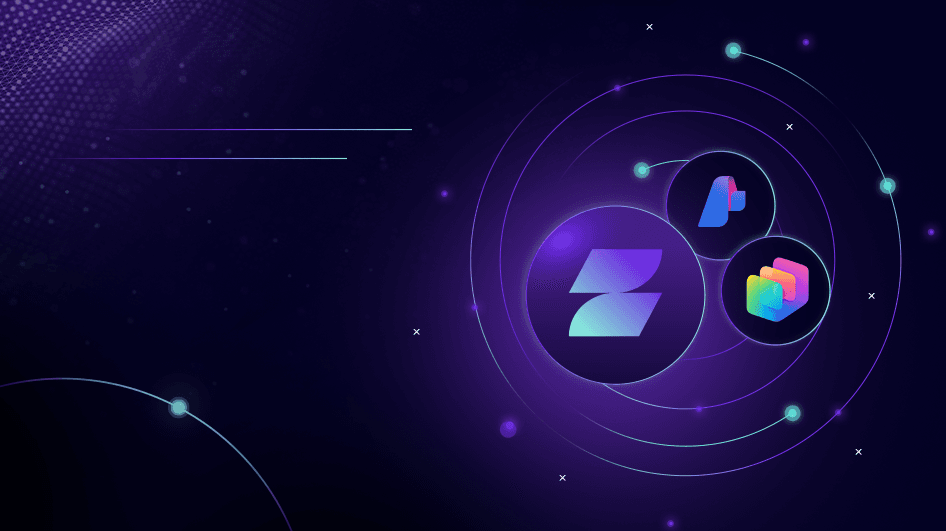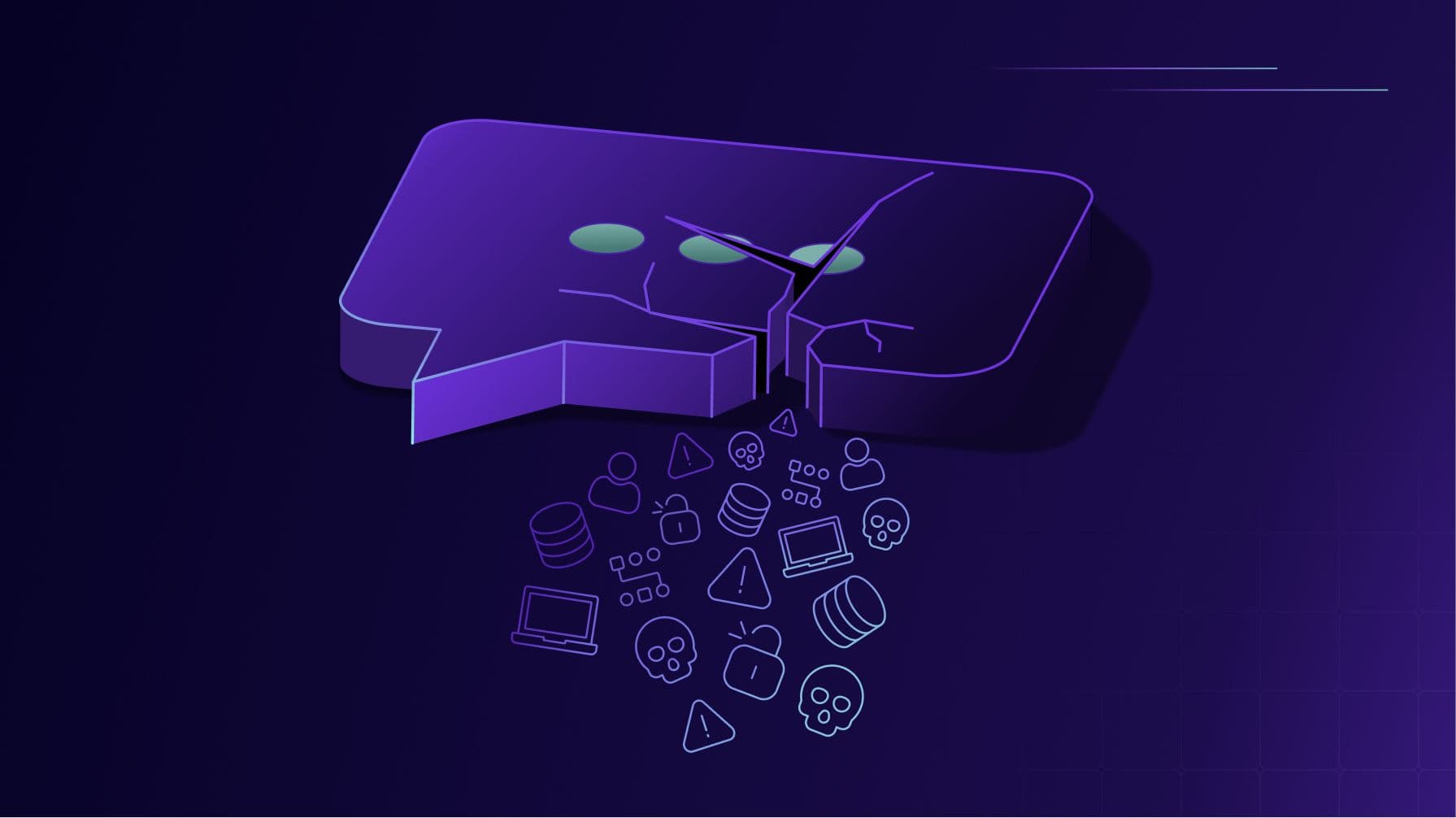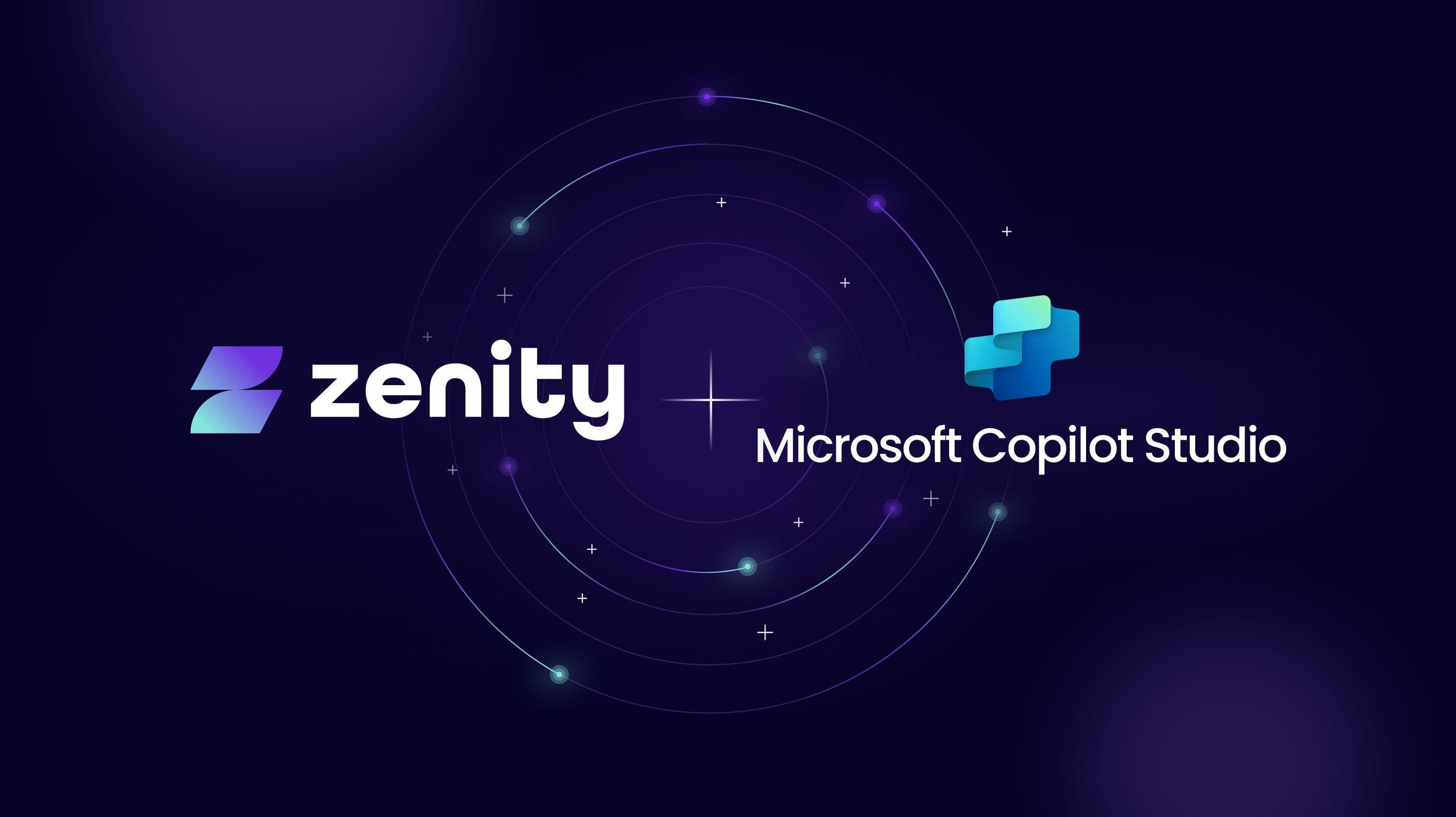Securing the AI Agent Era: One Control Panel Across SaaS, Endpoint, and Cloud

The companies winning with AI aren’t just deploying agents faster - they’re operationalizing them responsibly. They realize AI agents are creating a new, dynamic attack surface that traditional tools were never designed to handle.
These agents span the entire enterprise ecosystem. Microsoft 365 Copilot, Copilot Studio, and Salesforce Agentforce are SaaS‑managed agents. GitHub Copilot, Cursor, and Claude desktop run directly on user devices as device‑based agents. Agents built by your teams on AWS Bedrock, Google Vertex AI, and Azure AI orchestrate backend workflows as home‑grown agents. AI agents are already acting on behalf of users - accessing data, triggering workflows, and invoking APIs across your enterprise.
The implication is clear, if agents exist across your environment, then visibility, control, and enforcement must too.
Why Traditional Tools Aren’t Built for This
Most enterprise security tools today are environment-bound and completely separate approaches. CNAPP protects cloud infrastructure. EDR defends endpoints. SaaS security tools govern access and configurations. Each plays a critical role in a mature security strategy but all are designed to protect a specific environment.
AI agents don’t live in just one place. Relying solely on traditional tools means you're only seeing part of the picture (aka fragmented visibility). You might catch a Copilot action in SaaS, spot an API call in the cloud, or detect agent behavior on a user device but you won’t have unified visibility or control of agents that span those environments.
That said, this doesn’t mean legacy tools lose their value. In fact, Gartner’s AI TRiSM framework reinforces the importance of integrating model governance, data protection, and existing layers like CNAPP, DLP, and IAM. But it also makes one thing very clear. To secure AI agents effectively, organizations need purpose-built capabilities for governance and runtime inspection across across all three categories of agents.
Zenity is built for this new reality, agent-focused, not environment-bound, delivering end-to-end visibility and control over agents, no matter where they live or execute.
Securing SaaS-managed Agents
SaaS-managed agents like Microsoft 365 Copilot, Copilot Studio, and Salesforce Agentforce are making daily workflows dramatically more efficient and more complex to monitor.
Without the right controls, these agents can access sensitive data, generate content at scale, and interact with critical systems with little to no oversight.
Zenity helps security teams get ahead of these risks. We surface where agents are running, what they have access to, and how they interact with users and data giving you the ability to govern usage, apply role-based guardrails, and prevent sprawl before it starts.
During development, Zenity enables security teams to review Copilot Studio bots or Salesforce automations for dangerous configurations, shadow integrations, or excessive permissions.
And at runtime, Zenity continuously monitors behavior. If an agent attempts prompt chaining, data exfiltration, or misuse of internal APIs, Zenity can enforce policies in real time, ensuring your SaaS-based agents remain productive, not risky.
The result? Stronger governance, faster adoption, and confidence that SaaS-based AI agents are secure by design.
Addressing Shadow AI with Device-based Agents
Agents like GitHub Copilot, Cursor, and Windsurf are rapidly becoming indispensable to developers, analysts, and business users. But because they run directly on user devices (outside the visibility of cloud or SaaS security tools) they introduce real risk.
Zenity extends its agent-centric security model to the endpoint layer, giving security teams the oversight they’ve been missing. With Zenity, teams can continuously discover who’s using which agents, how they're configured, what Model Context Protocols (MCP) servers are connected, and what internal systems they interact with.
From there, Zenity enables policy enforcement and real-time protection. If an agent attempts to access sensitive data, invoke a disallowed tool, or misuse a compromised MCP, Zenity can detect and block the behavior instantly before exposure occurs.
Organizations get real visibility into one of the fastest-growing blind spots in enterprise agent usage allowing security teams to reduce risk while enabling safe agent adoption across local environments.
Controlling Home-grown Agents
Enterprises are rapidly building internal agents on cloud platforms like AWS Bedrock and Azure AI Foundry to automate backend workflows, analyze sensitive data, and orchestrate decision-making. But these cloud-based agents present risks traditional cloud security tools can’t see.
Zenity helps organizations secure these home-grown agents from development through runtime without slowing down innovation.
First, teams can discover and inventory agents across cloud environments, mapping usage to specific APIs, services, and business units. You’ll gain insight into which agents are running where, what data they access, and how they behave in real time. Next, Zenity enables proactive governance flagging misconfigurations, excessive permissions, and risky deployment patterns across AWS, Azure, and Google Cloud. Whether an agent is calling APIs across services, accessing production databases, or invoking tools across tenants, Zenity makes it visible and enforceable. At runtime, Zenity actively detects and prevents threats like prompt injection, memory poisoning, and cross-cloud privilege escalation providing real-time protection against risks that traditional monitoring simply misses.
For security teams, this means control over even the most complex AI automations. For the business, it means cloud-native innovation at scale without introducing invisible risk.
What This Means for Security Teams and the Business
Zenity unifies agent governance across SaaS‑managed, device‑based, and home‑grown agents, so your teams don’t need to piece together three different toolsets. One platform, one policy engine, full visibility.
For security teams, that means faster response, consistent enforcement, and reduced blind spots. For the business, it means AI agents can be deployed wherever they’re most useful without introducing unmanaged risk or operational friction.
With Zenity, you don’t just reduce AI risk, you unlock potential. Securely. At scale.
One Platform. Every Environment. Built for Agent-Powered Enterprises.
The age of AI agents is already here and they’re changing how work gets done.
Zenity gives security teams the power to discover, govern, and respond to agent behavior across every surface of the modern enterprise. Security teams get control. Business units get flexibility. The organization gets safer, smarter, more scalable AI.
Stop stitching together partial tools. See how Zenity secures AI agents everywhere. Visit us at Black Hat, booth #5108.
Related blog posts

Scaling Microsoft AI Agents Securely: Zenity Brings Inline Prevention to Microsoft Foundry and Copilot Studio
Microsoft Foundry and Microsoft Copilot Studio have made it simple to build AI agents that automate workflows,...

Closing the Guardrail Gap: Runtime Protection for OpenAI AgentKit
OpenAI’s AgentKit has democratized AI agent development in a big way. Tools like Agent Builder, ChatKit, and the...

Preventing AI Agents from Going Rogue: Zenity Collaborates with Microsoft Copilot Studio to Deliver Inline Protection Against Malicious Behavior
AI agents are autonomous, powerful, and deeply embedded in how modern businesses operate. From rerouting customer...
Secure Your Agents
We’d love to chat with you about how your team can secure and govern AI Agents everywhere.
Get a Demo